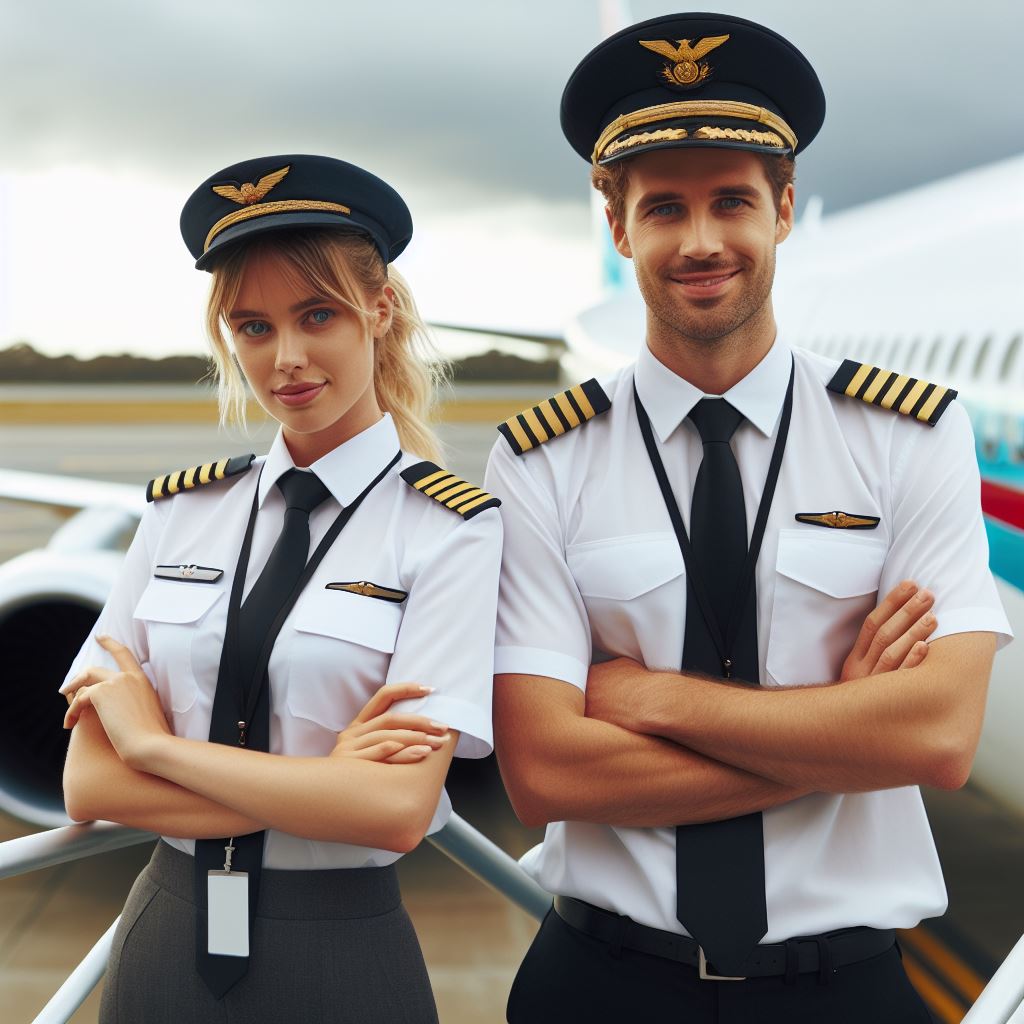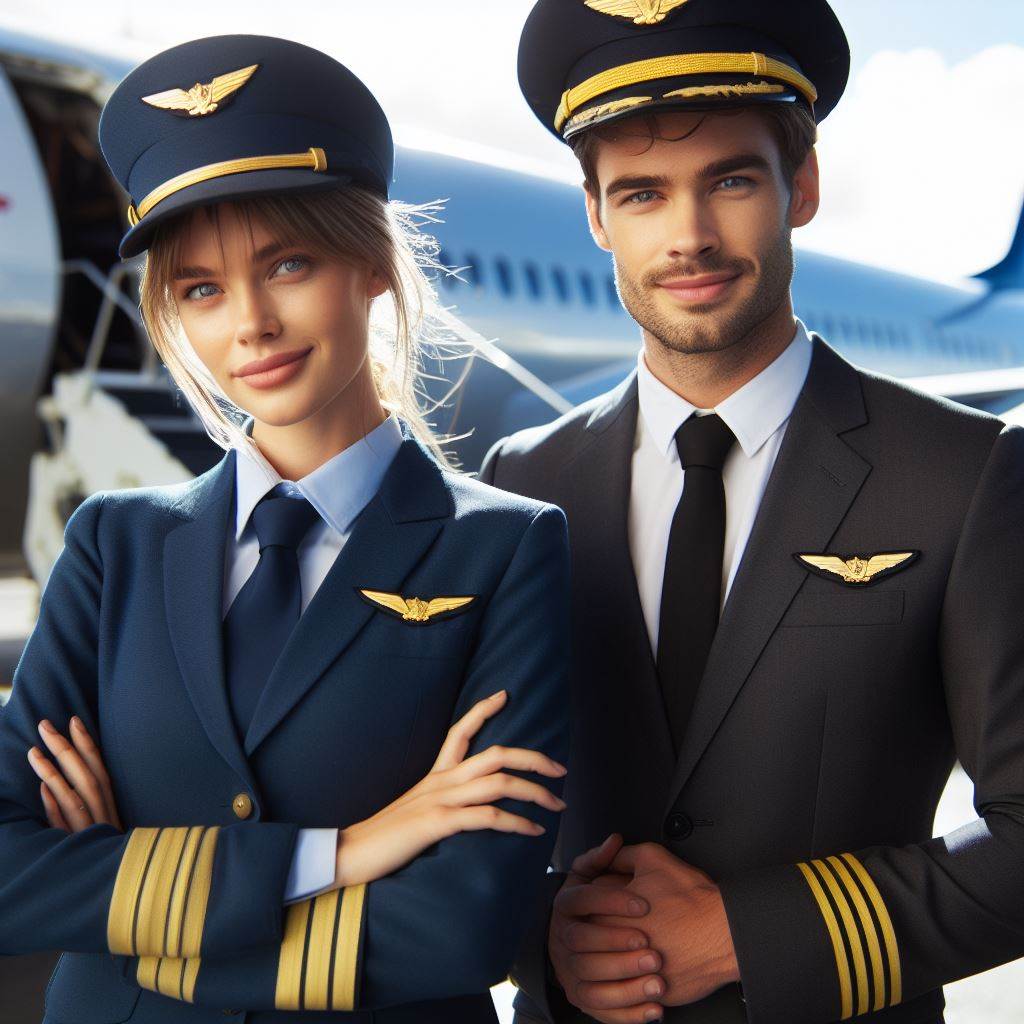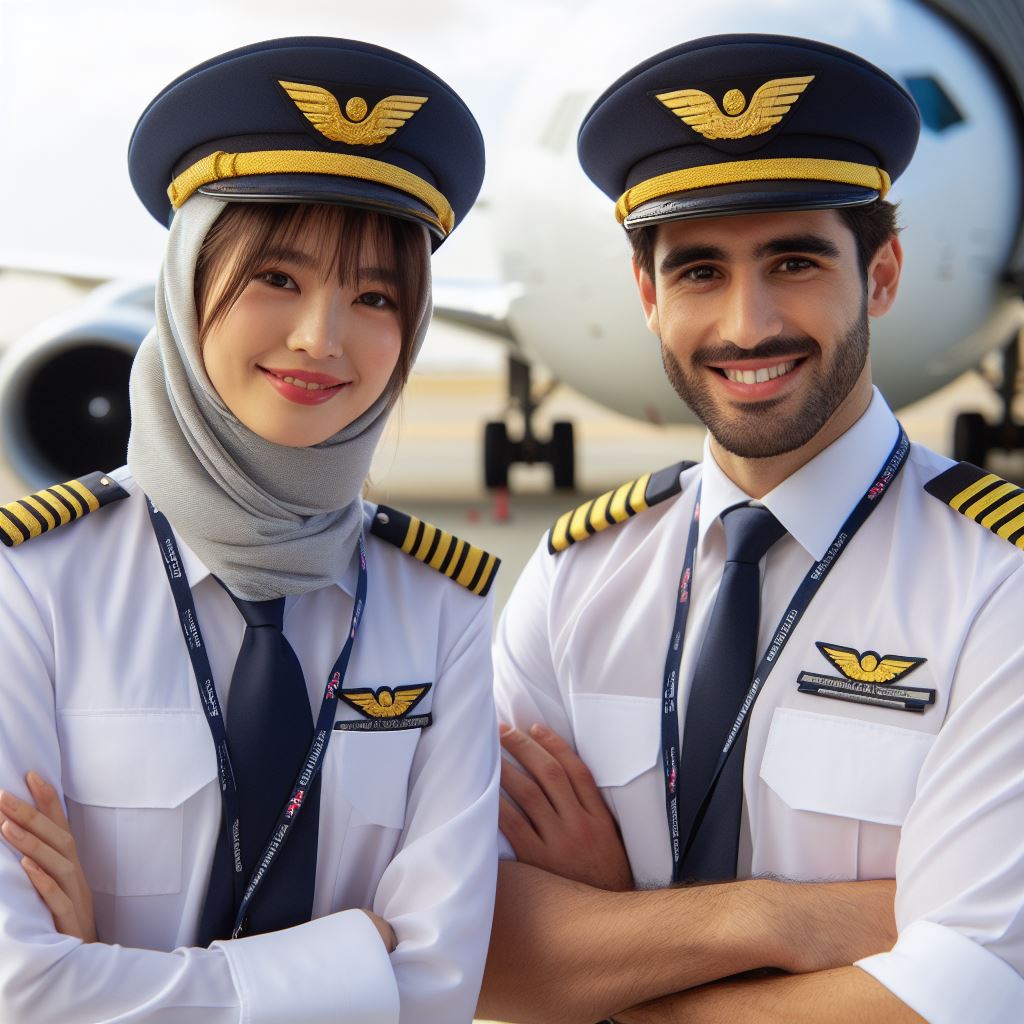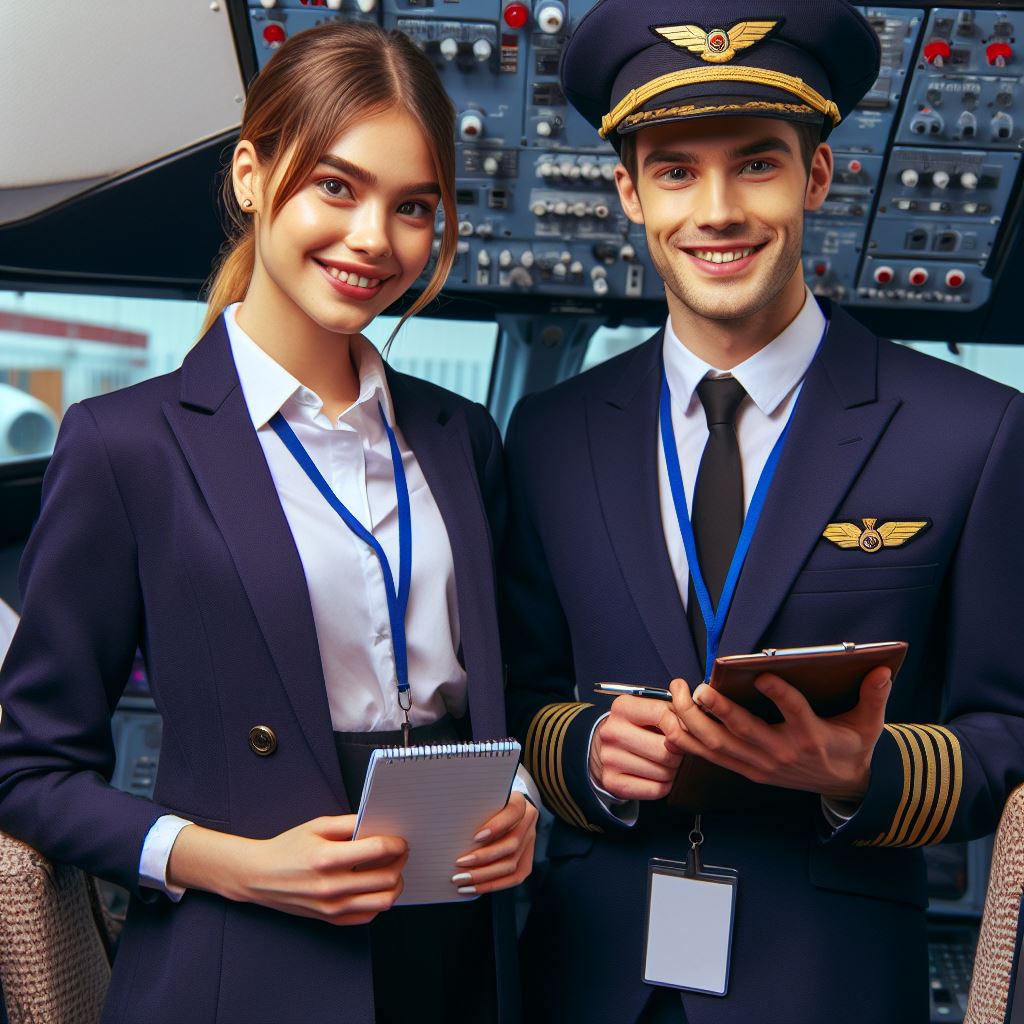Introduction
Retiring as an airline pilot in Australia marks the culmination of a distinguished career spent navigating the skies with precision and professionalism.
This pivotal transition signifies not only the conclusion of a section but also the beginning of a new phase in life.
However, the journey to retirement for airline pilots is not without its unique set of challenges and considerations.
Throughout their careers, airline pilots shoulder immense responsibility, ensuring the safety and comfort of passengers while adhering to stringent operational protocols.
The demands of the profession, including long hours, irregular schedules, and time away from home, can take a toll on both physical and mental well-being.
As pilots approach retirement age, they must navigate a myriad of decisions and adjustments, ranging from financial planning and healthcare considerations to lifestyle changes and identity transitions.
Moreover, the transition to retirement for airline pilots often involves grappling with the loss of a deeply ingrained sense of purpose and camaraderie that comes with being part of a close-knit aviation community.
The transition from a high-paced, structured environment to a more leisurely pace of life can pose challenges in terms of finding new sources of fulfillment and maintaining a sense of identity beyond the cockpit.
In this context, retiring as an airline pilot in Australia represents a significant milestone, marked by reflection, adaptation, and newfound freedom.
It is a time to celebrate accomplishments, cherish memories, and embark on new adventures.
However, it also necessitates careful planning, support, and a proactive approach to navigating the transition with grace and resilience.
In the following discussion, we will delve deeper into the unique challenges and considerations faced by airline pilots as they approach retirement, exploring strategies for a smooth transition and embracing the opportunities that lie ahead in this new section of life.
Requirements for Retirement
In Australia, airline pilots are subject to mandatory retirement age regulations, typically set at 65 years old.
This age limit is established for several reasons, primarily revolving around safety concerns and health considerations.
A. The mandatory retirement age for airline pilots in Australia
Firstly, the mandatory retirement age for airline pilots is rooted in safety protocols aimed at ensuring the highest standards of aviation safety.
As pilots age, they may experience declines in cognitive function, reaction times, and physical capabilities, which can potentially compromise their ability to perform critical tasks in the cockpit.
By imposing a mandatory retirement age, aviation authorities aim to mitigate the risks associated with age-related declines and uphold safety standards within the industry.
B. The reasons behind this age limit
Additionally, the mandatory retirement age serves to address concerns regarding pilot health and well-being.
Aviation is a demanding profession that requires pilots to maintain optimal physical and mental fitness to perform their duties effectively.
As pilots age, they may be more susceptible to medical conditions that could affect their ability to operate aircraft safely.
Imposing a retirement age helps ensure that pilots can step away from the cockpit before age-related health issues pose a risk to themselves, passengers, and crew.
C. Alternative options available for pilots reaching retirement age
While mandatory retirement age regulations apply to most commercial airline pilots in Australia, there are alternative options available for those reaching retirement age.
Some pilots may choose to transition into roles within the aviation industry that do not involve active flying, such as training, management, or consulting positions.
Others may pursue opportunities outside of aviation altogether, leveraging their skills and experience in other fields.
Furthermore, some airlines offer flexible retirement programs that allow pilots to gradually reduce their flying duties as they approach retirement age, providing a transition period to adjust to life beyond the cockpit.
These programs may include part-time flying arrangements, reduced work schedules, or opportunities for mentorship and knowledge transfer to junior pilots.
In essence, the mandatory retirement age for airline pilots in Australia is established to uphold safety standards, mitigate age-related risks, and safeguard pilot health and well-being.
While this age limit is firmly enforced, alternative options and retirement programs exist to support pilots in transitioning to the next phase of their lives with flexibility and dignity
Retirement Planning for Airline Pilots
A. The importance of early retirement planning for airline pilots
The importance of early retirement planning cannot be overstated, especially for airline pilots whose careers involve unique challenges and considerations.
Embarking on a career that involves rigorous training, fluctuating schedules, and significant responsibility underscores the need for meticulous financial foresight to ensure a smooth transition into retirement.
B. Start planning for retirement as a pilot
Commencing retirement planning early in a pilot’s career is crucial due to the dynamic nature of the aviation industry.
Pilots often face mandatory retirement ages, and unexpected events, such as economic downturns or industry shifts, can impact job security.
By initiating retirement planning early, pilots can build a robust financial foundation that provides security and flexibility in later years.
To start planning for retirement, pilots should first establish clear financial goals.
Understanding desired lifestyle choices, travel plans, and potential healthcare expenses is vital.
Creating a budget that accounts for both short-term and long-term financial objectives allows pilots to allocate resources effectively.
C. The financial aspects, such as savings, investments, and pension plans
Savings play a pivotal role in retirement planning.
Establishing an emergency fund to cover unexpected expenses ensures financial stability.
Additionally, contributing consistently to retirement accounts, such as superannuation funds in Australia, helps accumulate wealth over time.
Pilots should take advantage of employer-sponsored retirement plans, maximizing contributions to benefit from potential employer matches.
Investments offer a means to grow wealth over the long term.
Diversifying investment portfolios can help mitigate risk.
While pilots may receive financial education from their employers, seeking advice from financial professionals is advisable to tailor investment strategies to individual goals and risk tolerance.
Pension plans are integral components of retirement planning for many pilots.
Understanding the terms and conditions of pension schemes, including vesting periods and payout structures, is essential.
Pilots should explore options for optimizing pension benefits, such as deferring retirement to increase payouts or considering lump-sum options.
Insurance considerations, including health and life insurance, should not be overlooked.
Pilots need to assess coverage options, factoring in potential healthcare costs and ensuring that loved ones are adequately protected in the event of unforeseen circumstances.
In fact, early retirement planning is paramount for airline pilots, given the unique demands of their careers.
Establishing clear financial goals, prioritizing savings and investments, and understanding pension plans are crucial steps in ensuring a secure and fulfilling retirement.
By adopting a proactive approach to retirement planning, pilots can navigate the complexities of their profession with confidence, enjoying the fruits of their labor in their well-deserved retirement years
Health Considerations
A. Physical and mental health requirements for pilots nearing retirement age
As airline pilots approach retirement age, it becomes crucial for them to meet certain physical and mental health requirements.
These requirements are in place to ensure the safety of the pilots and the passengers they fly.
Maintaining good physical health is essential for pilots.
They must possess excellent vision, hearing, and overall physical fitness to handle the demanding nature of their job.
Any decline in these areas can pose a risk during critical flight operations.
Similarly, mental health plays a significant role in a pilot’s ability to perform their duties effectively.
Your Personalized Career Strategy
Unlock your potential with tailored career consulting. Get clear, actionable steps designed for your success. Start now!
Get StartedThey should be free from any mental illnesses or conditions that may impair their judgment, decision-making, or cognitive functions.
B. Importance of regular health check-ups and maintaining fitness
Regular health check-ups are essential for pilots nearing retirement age.
These check-ups help in identifying any potential health issues that may affect their ability to continue flying safely.
Early detection and treatment can prevent these issues from escalating and jeopardizing their careers.
Maintaining fitness is another crucial aspect for retired pilots.
Regular exercise and a healthy lifestyle can help them stay physically and mentally fit, even after they leave the cockpit.
It is important to adopt a balanced diet, exercise regularly, and manage stress effectively to ensure overall well-being.
C. Specific health challenges faced by retired pilots and how to address them
Retired pilots may face specific health challenges as they transition out of their careers.
One such challenge is adjusting to a sedentary lifestyle after years of being physically active.
It is important for them to incorporate regular exercise into their daily routine to prevent weight gain and maintain muscle strength and flexibility.
Additionally, retired pilots may experience psychological challenges such as a loss of identity or purpose.
Engaging in hobbies, volunteering, or pursuing new interests can help maintain a sense of fulfillment and combat feelings of emptiness.
Age-related health concerns, such as heart disease or diabetes, may also arise.
Regular health check-ups, including screenings for these conditions, can aid in early detection and timely intervention, ensuring a higher quality of life during retirement.
Furthermore, retired pilots should be proactive in managing their mental well-being.
Seeking support from family, friends, or professional counseling services can help alleviate any emotional stress or anxiety associated with the transition into retirement.
In summary, retiring as an airline pilot in Australia involves important considerations regarding physical and mental health.
Meeting the necessary health requirements, undergoing regular check-ups, and maintaining fitness play a vital role in ensuring a safe and fulfilling retirement for pilots.
By addressing specific health challenges and actively managing their well-being, retired pilots can enjoy a healthy and fulfilling life beyond their aviation careers.
Read: Train Driving in Australia: Pros & Cons
Transitioning to Retirement
Transitioning to retirement can be an emotional and psychological journey for pilots, as they leave behind a career that has been a significant part of their lives for many years.
A. Emotional and Psychological Aspects of Transitioning to Retirement
- Loss of Identity: Many pilots have spent the majority of their adult life flying planes, and retiring means letting go of the identity associated with their profession. It can lead to a sense of loss and uncertainty about the future.
- Sense of Purpose: Being a pilot often comes with a strong sense of purpose and fulfillment. Retirement may leave pilots feeling like they have lost their purpose in life, leading to feelings of emptiness or boredom.
- Social Connections: Pilots often have a strong camaraderie with their colleagues, and leaving the industry means leaving behind these relationships. It can result in a sense of isolation and loneliness.
- Financial Concerns: Transitioning to retirement may bring financial worries for pilots, especially if they haven’t adequately planned for their post-retirement expenses. The fear of not being able to maintain the same standard of living can be stressful.
B. Tips for Coping with Lifestyle Changes and Adjusting to a Non-Flying Routine
- Create a New Routine: Establishing a new daily routine can help fill the void left by the absence of a flying schedule. Engage in activities that bring joy and fulfillment, such as hobbies, volunteering, or pursuing further education.
- Stay Connected: Maintain and nurture social connections outside of the aviation industry. Join a retirement community, attend pilot gatherings, or seek out new friendships to combat feelings of loneliness.
- Seek Professional Help: If the emotional and psychological transition becomes overwhelming, consider seeking assistance from a therapist or counselor who specializes in retirement adjustment issues.
- Stay Engaged with Aviation: Pilots can still stay connected to their passion for aviation by joining aviation clubs, attending airshows, or becoming flight instructors. This can provide a sense of fulfillment and keep the connection to the industry alive.
C. Available Resources or Support for Pilots
- Professional Associations: Organizations like the Australian & International Pilots Association (AIPA) provide resources, support, and networking opportunities for retired pilots.
- Retirement Planning Services: Financial advisors specializing in retirement planning can help pilots navigate the financial aspects of retirement and ensure a smooth transition.
- Aviation-specific Support Groups: There are support groups specifically tailored for retired pilots, such as the Retired Airline Pilots Association, where pilots can connect with others going through the same transition.
- Community Programs: Local community centers often offer programs for retirees, such as fitness classes, art workshops, or discussion groups, providing opportunities for socializing and learning new skills.
In a nutshell, retiring as an airline pilot in Australia involves not only the practical aspects but also the emotional and psychological challenges of transitioning to a new section in life.
By acknowledging these aspects and following the provided tips and utilizing available resources, pilots can navigate this transition period more smoothly and embrace the opportunities that retirement brings.
Read: Australian Train Driver: Career Path

Gain More Insights: Airline Pilot Unions: The Aussie Perspective
Post-Retirement Opportunities
Retiring from a career as an airline pilot in Australia does not necessarily mean the end of professional pursuits.
In fact, retired pilots often possess a wealth of knowledge, skills, and experience that can be valuable in various post-retirement career paths.
Here are some post-retirement opportunities for retired pilots in Australia:
Stand Out with a Resume That Gets Results
Your career is worth more than a generic template. Let us craft a resume and cover letter that showcase your unique strengths and help you secure that dream job.
Get HiredA. Flight Instructor
Many retired pilots choose to become flight instructors, sharing their expertise with aspiring aviators.
By providing flight training and guidance, retired pilots can contribute to the development of the next generation of pilots while staying actively engaged in the aviation community.
B. Simulator Operator
Retired pilots may find opportunities as simulator operators, conducting flight simulations for training purposes.
Their extensive experience in cockpit operations and procedures makes them well-suited for roles involving simulator instruction and evaluation.
C. Aviation Consultant
With years of experience in aviation operations, safety protocols, and regulatory compliance, retired pilots can offer consultancy services to airlines, aviation companies, and regulatory agencies.
Their insights and expertise can help improve operational efficiency, enhance safety measures, and navigate regulatory challenges.
D. Aviation Management
Retired pilots may transition into roles within aviation management, leveraging their leadership skills and industry knowledge to oversee airline operations, flight scheduling, or safety management systems.
Their firsthand experience in the cockpit provides valuable perspective in managing aviation-related processes and personnel.
E. Corporate Pilot
Some retired pilots choose to continue flying in a corporate or private capacity, operating aircraft for business executives, charter companies, or private individuals.
This allows them to maintain their flying skills while enjoying a more flexible schedule and reduced operational pressures compared to commercial aviation.
F. Aerospace Engineering
Pilots with a background in engineering or a keen interest in aircraft mechanics may explore opportunities in aerospace engineering.
Their practical knowledge of aircraft systems and performance can be invaluable in roles involving aircraft design, maintenance, or research and development.
Business and Management: Beyond the aviation industry, retired pilots may pursue opportunities in business and management roles where their leadership skills, decision-making abilities, and operational expertise are highly valued.
Industries such as logistics, transportation, and project management offer avenues for career advancement and professional growth.
Bascially, retiring from a career as an airline pilot in Australia opens doors to a diverse range of post-retirement opportunities.
Whether within the aviation industry or beyond, retired pilots possess a unique skill set and experience base that can be applied to various roles, contributing to continued professional fulfillment and personal satisfaction in retirement.
Read: How to Become a Train Driver in Australia
Learn More: Jetlag Management Tips by Aussie Cabin Crew
Gain More Insights: Warehouse Management Tips for Aussies
Find Out More: Eco-Friendly Driving: Trains in Australia
Transform Your LinkedIn for Maximum Impact
Elevate your professional brand with a LinkedIn profile that attracts recruiters, showcases your expertise, and maximizes opportunities. Stand out in your industry with a profile built for success.
Boost ProfileMaintaining Connections
Maintaining connections is crucial for retired airline pilots in Australia to stay engaged with the aviation community and continue benefiting from their vast experience and knowledge.
A. Importance of Maintaining Connections
- Knowledge Sharing: Staying connected allows retired pilots to share their expertise and insights with younger generations, contributing to the growth and development of the aviation industry.
- Mentorship Opportunities: By maintaining connections, retired pilots can mentor aspiring pilots and provide guidance as they navigate their careers.
- Continued Learning: Being part of the aviation community after retirement keeps pilots updated with the latest industry trends, technologies, and regulations.
- Emotional Support: The aviation community provides a support system for retired pilots, offering a sense of belonging and companionship.
B. Organizations and Associations for Retired Pilots
- Australian Air Pilots’ Association (AAPA): AAPA offers membership to retired pilots, providing a platform to connect with fellow pilots, engage in events, and access industry resources.
- Professional Pilots Retirees Association (PPRA): PPRA is a community that promotes camaraderie among retired pilots through social gatherings, seminars, and networking events.
- Royal Federation of Aero Clubs of Australia (RFACA): RFACA advocates for general aviation, offering retired pilots a chance to stay connected with the broader aviation community.
C. Networking Opportunities and Events
- Aviation Industry Conferences: Retired pilots can attend conferences like the Australian International Airshow or the National Aviation Press Club, which offer networking opportunities with industry professionals.
- Airline Reunions: Various airlines organize reunions and events exclusively for retired pilots, fostering connections and allowing them to catch up with former colleagues.
- Aviation Museums and Airshows: These events not only provide an opportunity for retired pilots to immerse themselves in their passion but also allow them to connect with aviation enthusiasts from all walks of life.
- Local Flying Clubs: Joining local flying clubs provides retired pilots a chance to stay active in aviation, exchange experiences with fellow pilots, and participate in aviation-related activities.
- Volunteer Opportunities: Retired pilots can contribute their expertise by volunteering for organizations like Angel Flight, which provides medical transportation for patients in need.
- Online Aviation Forums: Participating in online forums, such as PPRuNe (Professional Pilots Rumour Network), allows retired pilots to discuss industry-related topics, share experiences, and connect with pilots worldwide.
- Social Media Groups: Joining aviation-themed groups on platforms like Facebook and LinkedIn helps retired pilots connect with other aviation enthusiasts, share updates, and engage in discussions.
Maintaining connections within the aviation community after retirement enhances the overall well-being and satisfaction of retired airline pilots in Australia.
By staying engaged and active, retired pilots continue to contribute to the industry while enjoying the camaraderie of fellow aviation professionals.
Read: Day in the Life of an Aussie Train Driver
Explore Further: Australian Airline Pilot: Career Progression
You Might Also Like: Top Challenges for Logistics Managers Down Under
Conclusion
A. Key Points Discussed
- Retirement planning is crucial for airline pilots.
- Understanding pension options and financial implications is vital.
- Health considerations and lifestyle adjustments are significant factors.
- Transitioning from a structured routine requires careful adjustment.
- Exploring post-retirement opportunities can enrich life post-career.
B. Final Thoughts and Advice
- Plan early and seek professional financial guidance.
- Prioritize physical and mental well-being for a smooth transition.
- Embrace the freedom retirement brings while staying engaged.
- Reflect on achievements and cherish memories made in the skies.
- Prepare for a fulfilling second act beyond aviation.
C. Encouragement for Readers
- Share your retirement experiences and tips with fellow pilots.
- Seek advice from retired pilots or financial experts.
- Explore resources offered by aviation associations or retirement communities.
- Embrace the journey of retirement with enthusiasm and preparation.
- Remember, retiring from the skies opens up new horizons to explore.
Retiring as an airline pilot in Australia marks the end of a remarkable career journey.
As you prepare to hang up your wings, ensure a smooth transition by prioritizing planning, health, and embracing the exciting opportunities that lie ahead.
Share your experiences, seek advice, and embark on this new section with confidence and enthusiasm.




